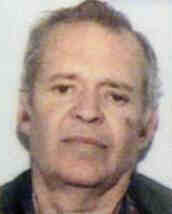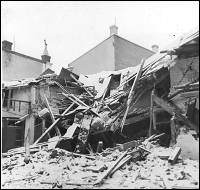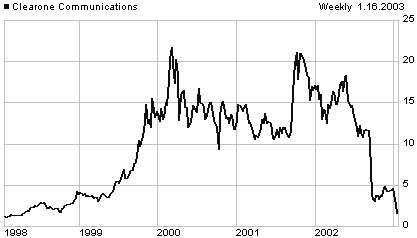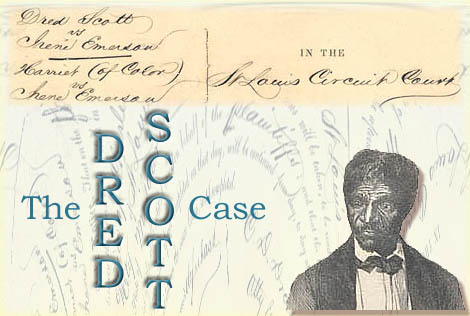|
 Deaths
which occurred on a January 15: Deaths
which occurred on a January 15:
2002
Avi Boaz, 71, shot by Palestinians of the Al Aqsa Martyrs Brigade.
Boaz [photo >], Jewish, was a permanent resident of Israel,
a US citizen, architect who designed houses in the Palestinian West Bank
town Eit Jala. The Palestinian gunmen kidnapped him at a Palestinian checkpoint
there, hijacking his car and forcing him to a lonely road above a soccer
field in nearby Beit Sahur, where they shot him at least 10 times. Boaz,
whose wife died of cancer on 05 January 2002, was driving to Palestinian-controlled
territory (forbidden to Israelis but not to foreign residents) to buy materials
for a home he was building, as he often did. His home most recently was
in the Israeli settlement of Maale Adummim, but he lived intermittently
in the Everest Hotel in Beit Jala for 20 years and still went there regularly
for lunch. He always said he was half Palestinian, and he was proud to be
a Jew living among Palestinians. Beit Jala is a predominantly Christian
town. Boaz was accompanied in his car by another Palestinian associate when
he stopped at the checkpoint. Four Palestinian civilians who were with four
Palestinian police officers ordered Mr. Boaz's companion out of the car
and then, when he refused, dragged him out and beat him. Boaz's Palestinian
companion alerted officials to the kidnapping. Lt. Col. Sharon Levy, an
Israeli officer who coordinates security with Palestinian officials in Eit
Jala, learned of the kidnapping when there might still have been time to
save Boaz. But when he sent his officers to the checkpoint, the Palestinian
policemen said nothing happened,.After finishing with Mr. Boaz's Palestinian
companion, the Palestinian civilians crowded into Mr. Boaz's silver two-door
Rover convertible and forced him to drive downhill through Bethlehem to
Beit Sahur. 10 and 20 gunshots were heard at about 14:30. The Rover was
found abandoned on Garbage Dump Road, a stretch of asphalt at the edge of
Beit Sahur. Boaz's face was covered in blood. The attack left about 10 bullet
holes in the windshield of Boaz's car and a crimson puddle in the passenger
seat. Blood spattered the dashboard and the inside the windshield, which
was cobwebbed with cracks. Boaz was killed just because he had a Jewish
name, Avi. Beit Sahur, Bethlehem and Beit Jala, all hilly towns with large
Christian populations, are strongholds of Mr. Arafat's faction, Fatah. Relations
with his Palestinian counterpart have been good, Colonel Levy said. He described
the Palestinian officer as shocked by the killing of Boaz.
2002
Yoela Chen, 45, Israeli woman, shot by two Palestinian gunmen who
blocked her car as it turned into a gas station outside Givat Zeev, an area
of northern Jerusalem that Palestinians consider an encroaching settlement.
Yoela was with her aunt, who was wounded. The two women were on their way
to a wedding. This was a few hours after the murder of Boaz [see above].
2001 Roni Tsalah, 30, Israeli, presumably killed by Palestinians,
His body is found in an orange grove near the Kfar Yam settlement. Then
a group of settlers go on a rampage in a nearby Palestinian village. Settlers
burned a greenhouse, smashed car windows and shot toward homes. In the West
Bank village of Kfar Salem, a Palestinian man was shot and killed in a clash
with Israeli troops. Earlier in the day, shots were fired from Kfar Salem
at an Israeli convoy, injuring a motorist. In another West Bank village,
Burkin, the body of a suspected informer with Israel was discovered, Palestinian
police said. In all, 369 people have been killed in 15 weeks of the al-Aqsa
intifada, including 317 Palestinians, 13 Israeli Arabs, 38 other Israelis
and a German doctor.
2001 Mouse, poisened in Zurich,
stowaway from the Dominican Republic sighted the previous day on an incoming
Balair Swiss charter jet, whose departure for Cancun was delayed 24 hours
until the corpse of the mouse was found. A mouse is considered a safety
hazard as it might gnaw on cables.
2000 Zeljko Raznatovic
“Arkan”, shot in a Belgrade hotel lobby by masked gunmen.
Arkan had been indicted by the U.N. war crimes tribunal for atrocities in
Bosnia and Croatia. — dirigente militar serbio aliado de Slobodan Milosevic,
muere en un tiroteo en el Hotel Intercontinental de Belgrado.
1998 Gulzarilal Nanda temporary Prime Minister of India (1964,
66)
1996 Moshoeshoe II, 51, King of Lesotho (1966-90),
in an auto accident.
1996 Alexander Todd, bioquímico
británico.
1988 Sean Mc Bride, político irlandés.
1983 Meyer Lansky, 81, reputed mobster, in Miami Beach
Florida.
1978 Lisa Levy and Margaret Bowman, murdered
in their sorority house at Florida State University in Tallahassee. Serial
killer Ted Bundy would be convicted of the crime and executed.
1966::
56 persons as an Avianca Constellation airplane crashes near Cartagena,
Columbia.
1965 Pierre Ngendandumwe, prime minister
of Burundi, murdered during a failed coup attempt.
1955 Yves
Tanguy, French US Surrealist painter born on 05 January 1900. —
MORE ON TANGUY AT ART “4” JANUARY
— LINKS
— From
One Night to Another — Indefinite
Divisibility — Neither
— The
Invisibles — Le
Malheur Adoucit les Pierres
1944: Ten women of the 74
jammed into one small cell at the Vught Concentration Camp.
1940 Day 47 of Winter War: USSR
aggression against Finland.
More deaths due to Stalin's desire to grab Finnish territory.
 Finns
advance in Salla Finns
advance in Salla
Undeterred
by his jammed machine gun, Staff Sergeant Siltavuori, a squadron test
pilot, downs an enemy DB bomber by cutting its rudder with the propeller
on his Fokker.
Northern Finland: Finnish troops begin
to pursue the retreating enemy in Salla by advancing from Joutsijärvi
in the direction of Märkäjärvi.
Ladoga Karelia: Viitavaara on the River
Aittojoki is finally lost to the Russians.
Eastern Isthmus: in Taipale, Finnish
troops repulse an assault by a fairly small enemy detachment.
Finnish patrols on the eastern border
are still vigorous and effective.
Viipuri: the city is subjected to surprise
attacks from the air. The sirens start up at 23 minutes past noon
as the first bombs explode. The late warning means there are still
many people on the streets and in shops and offices. Three people
are killed and several injured. The attack devastates the area around
Punaisenlähteentori square. [picture]
Abroad: the Swedish Government responds
to the Soviet note accusing Sweden of abandoning its neutrality and
the Swedish press of publishing anti-Soviet material. The Swedes reject
the accusation and affirm their commitment to freedom of the press.
The German Foreign Ministry denies
rumours of German attempts to play a mediating role in the Finno-Soviet
conflict and claims that the visits of the German Ambassador in Moscow
to Foreign Minister Molotov have merely concerned economic relations
between the two countries.
The Swedish novelist Selma Lagerlöf
donates her gold medal from the Swedish Academy and her Nobel Gold
Medal to the collection in aid of Finland.
Suomalaiset etenevät Sallassa
Talvisodan 47. päivä, 15.tammikuuta.1940
Lentolaivueeseen
kuuluva koelentäjä ylikersantti Siltavuori pudottaa viholliskoneen
Fokkerinsa konekiväärien jäädyttyä silpomalla vihollisen DB-pommikoneen
peräsimen potkurillaan.
Suomalaiset aloittavat vihollisen takaa-ajon
etenemällä Sallassa Joutsijärveltä Märkäjärven suuntaan.
Viitavaara Aittojoella jää lopullisesti
venäläisille.
Taipaleessa torjutaan pienehkön vihollisosaston
hyökkäys.
Itärajalla joukkojemme partiotoiminta
on edelleen vilkasta ja tehokasta.
Viipuria pommitetaan yllättävin ilma-iskuin.
Hälytyssireenit alkavat ulvoa klo 12.23 yhtaikaa ensimmäisten pommiräjähdysten
kanssa. Hälytyksen myöhästymisen takia kaduilla, kauppaliikkeissä
ja toimistoissa on paljon väkeä. Kolme ihmistä saa surmansa ja useita
loukkaantuu. Vihollinen saa suurta tuhoa Punaisenlähteentorin ympäristössä.
Ulkomailta: Ruotsin hallitus vastaa
Neuvostoliiton esittämään nootiin, jossa Ruotsia syytetään puolueettomuuspolitiikasta
luopumisesta ja ruotsalaisia lehtiä neuvostovastaisesta kirjoittelusta.
Ruotsin hallitus kiistää syytökset ja vetoaa lehdistön vapauteen.
Saksan ulkoministeriö kumoaa huhut,
joiden mukaan Saksa yrittäisi toimia välittäjänä Suomen ja Neuvostoliiton
sodassa. Saksan Moskovan lähettilään käynnit ulkoministeri Molotovin
luona ovat liittyneet maiden välisiin taloudellisiin suhteisiin.
Kirjailija Selma Lagerlöf lahjoittaa
Suomi-keräykseen Ruotsin Akatemialta saamansa kultamitalin sekä Nobel-kultamitalinsa.
|
1934: 10'700 people in 8.4 earthquake in India / Nepal.
1934 Patrick O'Malley US policeman, killed by John
Dillinger
1919 2 million gallons of molasses "Tidal
wave" Boston MA, drowning 21
1919 Rosa
Luxemburg, 37, Marxist revolutionary,
co-founder of the Spartacus League, arrested and murdered in Berlin
by members of a right-wing Freikorps (militia), who had seized control
of the city's police presidium during the abortive Spartacus revolt.
Here are two quotes from her (she was critical of the dictatorial
bent of the bolsheviks in Russia):
“Freedom for supporters
of the government only, for members of one party only — no matter
how big its membership may be — is no freedom at all. Freedom is always
freedom for the man who thinks differently.”
“We will be victorious if we have not forgotten how to learn.”
1919 Rosa Luxemburg et Karl Liebknecht
sont assassinés dans leur prison. Ex-animateurs du groupe révolutionnaire
Spartakus, les deux chefs du parti communiste allemand avaient tenté
d'importer la révolution russe et de soulever les masses ouvrières.
Mais le chancelier social-démocrate Friedrich Ebert étouffe leur tentative.
|
1896 Matthew B Brady, 72, US photographer (Civil War)
1879 Edward Matthey Ward, British painter born on 14 July
1816. — LINKS
— Sir
Thomas More's Farewell to his Daughter.
1909 Robert Zünd,
Swiss artist born on 03 May 1827.
1926 Eugeniusz
(or Eugen) Zak, Polish artist born on 15 December 1884. —
The
Nun (100x80cm)
1887 Friedrich von Amerling, Austrian
artist born on 14 April 1803.
1868 Lucie-Marie Mandix Ingemann,
Danish artist born on 13 February 1792.
1845 John Knox,
Scottish artist born in 1778.
1835 Juana María Teresa
Cabarrús de Tallien, revolucionaria española.
1811
Vincent Jans van der Vinne, Dutch artist born on 31 January 1736.
1743 Caspar Hirschel, German artist born in 1698.
1684 Caspar Netscher, Dutch painter specialized in portraits
born in 1639. — MORE
ON NETSCHER AT ART “4” JANUARY —
LINKS
— Mary
II, Wife of Prince William III — William
III, Prince of Orange and, from 1689, King of England — The
Lace-Maker — Presentation
of the Medallion
1687 Jacob Esselens, Dutch
painter born in 1626. — Mountain
scenery
1648 Francisco Capillas, beato español.
1318 Erwin de Steinbach,
bâtisseur de Cathédrale (Légende ou réalité?)
La vieille ville de Strasbourg, bien que très endommagée par la guerre
(40 – 45) conserve encore de très beaux monuments, vestiges des époques
révolues. Le plus beau est sans conteste la Cathédrale Notre-Dame
des Vosges, construite en grès rose, du XIème au XVème siècle. Toutes
les Cathédrales de France ou d’ailleurs n’ont pu être édifiée que
sur des siècles, non seulement pour des raisons économiques, mais
aussi parce que les moyens mis en œuvre, sans motorisation, ni mécanisation,
finement ouvrés, prenaient des vies entières. Elles sont donc bien
des œuvres collectives. Mais pourtant, celle de Strasbourg est attribuée
à Erwin de Steinbach ! En 1770, Goethe, en séjour à Strasbourg, est
rempli d’admiration pour la cathédrale et croit qu’Erwin de Steinbach
est l’auteur de son architecture. Il est ainsi à l’origine de la gloire
légendaire de maître Erwin. En fait, Erwin n’est responsable que d’une
partie de l’église.
Il est connu
par deux inscriptions. La première, en partie conservée au musée de
l’Œuvre, figurait sur la corniche d’une chapelle dédiée à la Vierge,
bâtie dans la nef de la cathédrale devant le jubé. Elle mentionne
que maître Erwin fit cette chapelle en 1316. La seconde est l’épitaphe
de la famille de Steinbach, placée sur un contrefort extérieur de
la chapelle Saint-Jean-Baptiste, toujours à la cathédrale. Le nom
de la femme d’Erwin, Husa, morte en 1316, vient en premier, suivi
de celui d’Erwin, qualifié d’administrateur de la fabrique (Gubernator
Fabrice ), mort le 15 janvier 1318, et du nom de leur fils, Jean,
maître de l’œuvre de la cathédrale, décédé le 18 mars 1339. Erwin
a un autre fils, architecte de l’église de Niederhaslach, Gerlach.
Il est donc architecte, membre d’une famille de constructeurs et administrateur.
On lui attribue, à la cathédrale de Strasbourg, le décor intérieur
du narthex et l’étage de la rose de la façade occidentale, ainsi que,
parfois, le tombeau sous enfeu (niche à fond plat) de l’évêque Conrad
de Lichtenberg, exécuté vers 1300 dans la chapelle Saint-Jean-Baptiste,
dans lequel un petit personnage barbu, sculpté en relief, le représenterait.
Erwin doit modifier le premier projet de la façade pour raccorder
l’étage de la rose aux parties hautes de la nef. Le réseau rayonnant
de la rose, le décor du narthex rappellent la façade méridionale du
transept de Notre-Dame de Paris et font penser que maître Erwin a
voyagé en France avant de travailler à la cathédrale de Strasbourg.
|
1208 Pierre de Castelnau, legado pontificio francés.
0429 Honoratus
of Arles bishop/saint.
0069 Servius Sulpicius Galba, 70, 6th
emperor of Rome (for 7 months 68-69), killed in the Forum Rome by the
Praetorian guards, which he had refused to reward for having abandoned
Nero in favor of himself.
|
 On
a 15 January:
On
a 15 January:
 2003
According to a court filing by the US Securities and Exchange Commission,
ClearOne Communications Corp. (CLRO) has overstated revenues, income and
accounts receivable by improperly recording some transactions with its distributors
and resellers as sales.
2003
According to a court filing by the US Securities and Exchange Commission,
ClearOne Communications Corp. (CLRO) has overstated revenues, income and
accounts receivable by improperly recording some transactions with its distributors
and resellers as sales.
 2000
Elian Gonzalez, with his cousin Marisleysis and great uncle Lázaro
González, enjoys the clowns at the Barnum and Bailey Circus in the
Miami Arena.
2000
Elian Gonzalez, with his cousin Marisleysis and great uncle Lázaro
González, enjoys the clowns at the Barnum and Bailey Circus in the
Miami Arena.  1951 Frenada por fuerzas de la ONU la ofensiva comunista en Corea.
1951 Frenada por fuerzas de la ONU la ofensiva comunista en Corea. Deaths
Deaths Finns
advance in Salla
Finns
advance in Salla